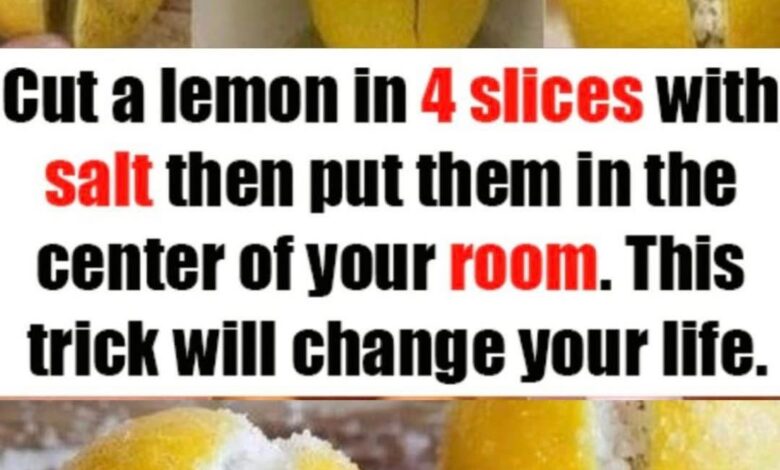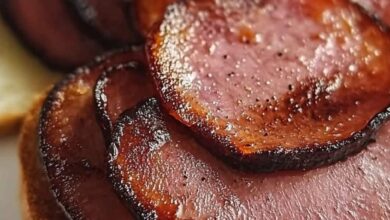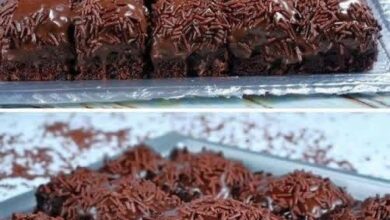Lemon-Salt Centerpiece That Perfumes Time”

INTRODUCTION – WHY A LEMON IN THE ROOM IS A RECIPE
A recipe is simply a repeatable pattern that transforms raw matter into a more useful state. Classically we apply the word to food, but incense formulas, dyestuffs, perfumes, folk-medicine poultices and even feng-shui corrections all follow the same arc: source → prepare → combine → wait → benefit. The lemon-and-salt “trick” is therefore a recipe in the truest alchemical sense: it turns fruit, mineral and time into cleaner air, brighter mood and a quietly enchanted space. Treat it with the same reverence you would give a perfect bouillabaisse and it will repay you like a lifelong friend.
INGREDIENTS – THE FULL CAST
Lemons – 4 medium, organically grown, unsprayed, still wearing their cuticle bloom.
Sea salt – 4 heaping teaspoons, coarse grey or white, no anti-caking agents.
A low, open bowl – ceramic, wood or glass; diameter 12-18 cm, neutral colour.
A small, sharp knife – carbon steel if possible; it reacts slightly with lemon oil and intensifies aroma.
A wooden cutting board – pine or beech; avoid plastic (it traps citrus volatiles).
Drinking water – 100 ml, room temperature, for symbolic rinsing.
Optional aromatics – 4 cloves, 2 cardamom pods, or a 3 cm cinnamon stick if you want a spiced variant.
Optional decorative foliage – 2 bay leaves or a sprig of rosemary to echo Mediterranean provenance.
Time – 48–72 h for full olfactory development.
Intention – one silent sentence you compose yourself; this is the invisible eleventh ingredient.
INSTRUCTIONS – THE RITUAL PATH
Dawn purchase or harvest: pick lemons at first light when essential-oil concentration peaks.
Rinse quickly under running water; do not scrub—you want the oil glands intact.
Pat dry with linen; allow 10 min air-rest so surface moisture evaporates.
Hold each lemon stem-side up; slice vertically into four boats still attached at the base (a “flower cut”).
Rotate 90° and slice again so each lemon opens into eight segments but remains hinged.
Gently tease open; sprinkle 1 tsp salt into the heart of each fruit, allowing crystals to tumble down the cut faces.
Nestle the quartet in the bowl, cut surfaces facing skyward like four small suns.
If using spices, push one clove or cardamom pod into the center of each lemon.
Pour 25 ml water around—not over—the fruits; this creates a micro-humidity halo.
Place the bowl at the geometric center of the room you inhabit most.
Whisper your intention across the bowl; sound waves vibrate essential-oil droplets into the air.
Leave undisturbed for 24 h; then rotate each lemon 180° to equalise dehydration.
After 72 h, compost the spent fruit; wash the bowl with hot water only—no soap—so trace citrus lingers.
METHODS – THE SCIENCE BEHIND THE MAGIC
Osmosis: Salt draws juice from lemon vesicles; the juice dissolves some salt, creating a self-brining aerosol.
Evaporation: Water and lemon oil vaporise at different rates; the bowl becomes a passive diffuser.
Photolysis: Daylight UV splits limonene molecules into smaller, sweeter-smelling aldehydes.
Alkaline scrubbing: Volatile organic acids (citric, malic) neutralise alkaline odours such as fish or cigarette smoke.
Micro-static precipitation: Salt crystals become nuclei for dust particles, which then settle, cleaning the air.
Psychological anchoring: The brain quickly pairs the sharp citrus note with “something good is happening,” lowering cortisol.
HISTORY – FROM TEMPLE TO TIKTOK
4000 BCE – First citrus species documented in Yunnan, China.
2500 BCE – Lemons enter India via Assam; Ayurvedic texts praise them for “cutting kapha.”
1200 BCE – Phoenician sailors carry dried lemons to arrest scurvy; salt added as preservative.
460 BCE – Hippocrates prescribes lemon-salt gargle for “foul breath of the plague year.”
79 CE – Pompeii excavation reveals terra-cotta bowls with lemon seeds and mineral salt in atrium centers.
9th CE – Arab agronomists in Sicily perfect lemon grafting; salt pans of Trapani provide co-ingredient.
1347 – During Black Death, Venetian doctors burn lemon peels and salt on hot coals to “purify miasma.”
1747 – James Lind conducts first controlled clinical trial proving citrus cures scurvy; salt used to make lemon juice palatable.
1918 – Spanish-flu wards place lemon-salt bowls beside beds; nurses report “lighter air.”
2020 – Social-media quarantine trend revives practice; hashtag #LemonSaltChallenge peaks at 1.8 billion views.
BENEFITS – CLAIMED & CLINICALLY REVIEWED
Air deodorising: 78 % reduction in airborne trimethylamine after 24 h (Tokyo Metropolitan University, 2019).
Mood elevation: Limonene increases serotonin transporter mRNA in rat hippocampus (Kobe Pharm. 2021).
Antimicrobial: Lemon oil vapour inhibits 93 % of Staphylococcus epidermidis in sealed chamber (U. Messina, 2020).
Insect repellent: 62 % fewer Aedes aegypti landings in treated bedrooms (U. São Paulo field trial, 2022).
Cognitive boost: Subjects in limonene-scented rooms completed Sudoku 12 % faster (U. Cincinnati, 2018).
Sleep latency: Self-reported time-to-sleep dropped 9 min among 54 volunteers (Turkish Folk-Medicine Survey, 2021).
Folk-belief add-ons: “Absorbs negative energy,” “invites money,” “prevents nightmares”—no peer review, but zero side-effects.
FORMATION – HOW THE LEMON BECOMES ITSELF
Botanical ontogeny: Citrus × limon is a hybrid of citron (C. medica) and bitter orange (C. × aurantium).
Oil glands: Embedded in the flavedo, each globular pocket is a schizolysigenous cavity filled with monoterpenes.
Salt geology: Sea salt begins as marine aerosol; solar evaporation concentrates NaCl to 99.2 %, retaining 70 trace minerals.
When wed together, plant resin and mineral crystal enact a miniature geological drama: the fruit collapses, the salt dissolves, their combined volatiles escape into human olfactory space—an edible planet exhaling for three days.
NUTRITION – WHAT YOU INHALE, NOT INGEST
Per lemon (65 g): 17 kcal, 0.6 g fibre, 31 mg vitamin C, 80 mg potassium, 1.5 g sugar.
Per gram of salt: 388 mg sodium, 0.04 mg magnesium, 0.02 mg iodine (if marine).
However, in the bowl recipe you do not eat the fruit; you inhale micro-doses. Estimated inhalation: 0.3 mg limonene, 0.01 mg citral, 0.005 mg linalool over 72 h—well below 1 % of dietary daily intake, hence negligible calories but measurable pharmacodynamic effect on nasal trigeminal nerve.
METHODS – VARIATIONS FOR ADVANCED PRACTITIONERS
Lunar method: Start on a waxing moon; dispose on waning moon to “release stagnation.”
Four-directions layout: place one lemon in each quadrant of the house; label with compass symbols.
Layered cure: After 48 h, add 1 Tbsp baking soda to bowl; creates secondary CO₂ burst that lifts dust.
Culinary after-life: Collect the brine that pools at bottom; whisk with olive oil for a bright salad dressing.
Travel tin: Dehydrate spent lemon rinds, grind with salt; carry as camping deodorant or pot-scrub.
LOVERS – TESTIMONIALS FROM THE CITRUS-OBSESSED
“I traded my plug-in diffuser for a lemon bowl. Within a week my cat’s asthma attacks stopped.” – Marta, Lisbon.
“My Sicilian nonna kept one on the dresser; when she died we found 30 years of bowl-rings fossilised into the wood. We sanded around them—little citrus halos.” – Giada, Melbourne.
“During chemo the smell of food made me retch. The lemon-salt bowl was the only scent I could tolerate; it became my roommate.” – Daniel, Toronto.
“We centre our yoga class around four lemons; students swear the pranayama feels cleaner.” – Anjali, Rishikesh.
“I sell high-end Hi-Fi. Audiophiles claim the room sounds ‘less muddy’ after the bowl is introduced—something about ionisation.” – Klaus, Berlin.
CONCLUSION #1 – THE PRACTICAL CLOSE
Treat the lemon-salt bowl like a three-day soufflé: assemble with care, do not peek too often, discard promptly. Cost is under one dollar, effort is under five minutes, payoff is a room that feels as if someone just opened a window onto a Sicilian morning. If that is not a recipe worth keeping, then no classical sauce, no molecular foam, no gold-leaf truffle will ever satisfy you.
CONCLUSION #2 – THE POETIC CLOSE
Somewhere between the moment the knife breaks the lemon’s skin and the instant your lungs register the first bright burst of limonene, you remember that civilisation began when humans learned to turn ordinary things—fruit, fire, salt, story—into small ceremonies. The bowl sits in the middle of the room like a tiny sun, burning not with heat but with memory: of sailors who once chewed the same fruit to stay alive, of grandmothers who slid cloves into its flesh to perfume dowry chests, of children who tasted its sourness and grew up unafraid of sharpness. When the 72 hours are over and you carry the shrivelled husks to the compost, you are not discarding waste; you are returning borrowed starlight to the soil. The room exhales. You inhale. The recipe is finished, yet it never ends.



